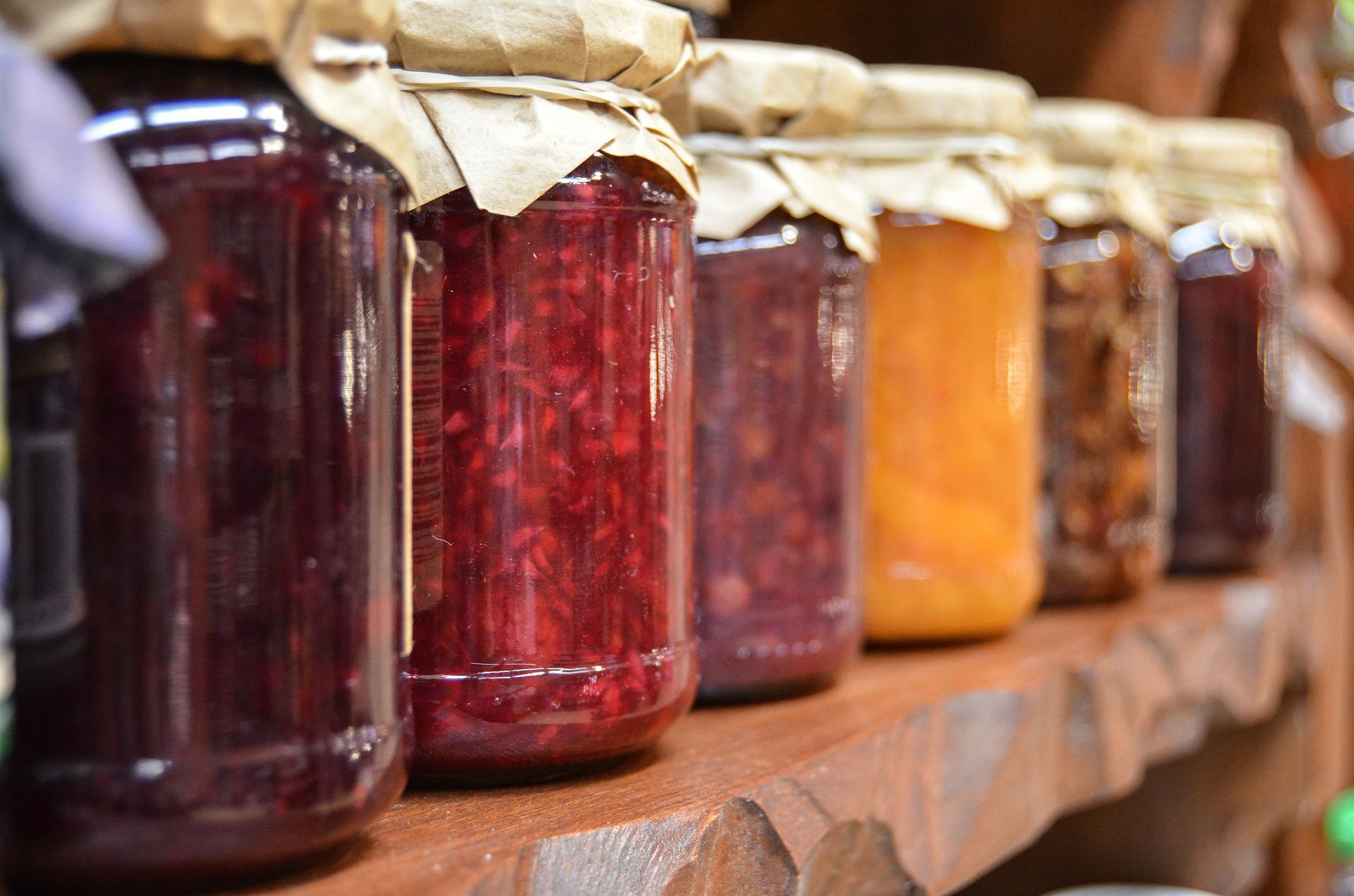bottled and jarred packaged goods: A new and fascinating thing is being created all the time as time progresses and we humans are exposed to more diverse experiences. As a global industry, it is impossible to ignore the importance of the food sector. We wouldn’t be able to function without these. Foods that are packaged in either “bottled” and “jarred” containers, regardless of whether or not they are edible, are labelled as such.
Different Types of Bottled and Jarred Packaged Products
It was common practise in ancient times to store items in homemade jars and bottles. These jars and bottles are now produced in large quantities in factories due to their widespread usage. Because of their ease and comfort, people all over the world have come to rely on them. Some examples of Bottled and Jarred Packaged Goods include the following:
You’ll see a variety of food packaging options at the market. It’s possible to buy canned food, as well as glass jars of food, and plastic bottles of food. Food is also often found in foil-wrapped packages. Convenience, health, recycling, and disposal all have their benefits and drawbacks when it comes to food packaging options.
They are known for their ease of use because they are packaged in cans and bottles. A few nasties lurk in the packaging of most packaged goods, as is the case with all such convenience foods. Without much awareness or knowledge, you can still make an educated guess about the health benefits and dangers of various packaged goods.
It is possible to describe packaging in jars and bottles as follows
Jars and bottles of pre-packaged goods have been around for a very long time. Glass canisters date back to Ancient Egypt, where they were first used.
For a long period of time, bottle-making technology remained stagnant. After 1900, however, things dramatically changed. As a result of the invention of the first bottle-making machine during this period, bottled and jarred goods began to be mass produced.
Typical household chemicals are stored in air-tight glass canisters. Plastic bottles and cardboard boxes now compete with glass jars and pots. Despite the competition, there is still a high demand for bottled containers.
Today, there are a wide variety of food packaging options. The product to be packaged is the primary factor in determining the style of packaging.
Packaging’s primary objective is to ensure the safety of the food it contains. For both customers and manufacturers, packages have grown to include additional features that are beneficial. A wide variety of containers are available for packaging, including glass cans, aluminium foil pouches, and plastic bottles. Every type of food packaging has its advantages and disadvantages.
Merchandise packaged in glass or plastic bottles is known as bottled goods. To sell packaged goods, cans, glass jars, boxes and plastic tubs are commonly used. All types of meat and seafood fall under this heading. In addition to food, this includes non-food items such as toothpaste and shampoo, pet food, gardening supplies, and more.
Bottled water has replaced tap water as a means of avoiding contaminated water. Canned goods, on the other hand, tend to be more unhealthy for your body. Because glass canisters can be recycled or reused, they have an advantage over plastic containers. Moreover, they are free of any potentially harmful chemicals that could contaminate food in the process of production.
Packaged food is generally safe to eat, but there are exceptions. To avoid the growth of bacteria, some of these packaged foods must be handled and stored correctly. Packaged fruits are a good example. Foods that need to be heated up before consumption are also available.
Packaged goods can be found in abundance at grocery stores everywhere. In addition to being reasonably priced, these pre-packaged items typically last for a longer period of time.
Industry: Good Packaged Goods
A wide variety of bottled and jarred packaged foods are available from a wide variety of businesses. A product’s class is determined solely by its packaging. The packaged goods industry relies heavily on glass bottles because they are so widely preferred.
Aluminum-based containers:
Due to its low cost and ease of production, it is unquestionably one of the most commonly used materials in the industry. In addition to being safe and extending the shelf life of food, these containers are made from recycled materials. To seal the plastic trays and to fill the bags, aluminium can be used.
Natural Wooden Boxes:
As a material that can withstand conservation efforts, it is a long-lasting choice. There are a variety of liquids commonly packaged in wooden containers, including oil, beer, and wine. If you want to keep the flavour and quality intact, experts say you should use this material. In the same way that gourmet foods are packaged in wooden boxes, fruits and vegetables can be as well.
Containers made of glass:
Gas-tightness and no corrosion are two advantages of glass containers If it is cleaned and sanitised, it can be reused and recycled for a longer period of time. Foods like beer and jam are just two examples of what you can get this way.
Containers made from metal:
Because of the metal’s hermetic seal, food can be kept fresh for a long time. Due to metal containers’ advantages in terms of product safety, canned food is commonly packaged in them Fish, fruits, vegetables, and pates are all common foods that can be stored in a can, as are other types of food. In order to keep a large number of different types of metal containers, it’s difficult.
Packaging in cardboard
Highly absorbent material readily transports wetness into its contents. Cardboard has many advantages, including being lightweight and recyclable. Moldable plastic is frequently used in the packaging and shipping of foodstuffs because of its versatility A few examples of products that make use of these are takeaway dinners, fruit or vegetable boxes, nuts tubs, condiment tubes, and frozen food boxes.
What are the benefits and drawbacks of pre-packaged foods?
In our world, everything has both positive and negative aspects. However, overdosing on anything can lead to disaster, so we must be extremely cautious. Because there is no such thing as a free lunch in this world, even love can have its drawbacks if consumed in excess.
Pros:
Bottled and jarred packaged goods have a number of advantages: the following:
Hygienic:
For commodities, cleanliness is a major factor to take into consideration. Using a glass container eliminates the need for an enzyme, releases no radiation, and does not affect the content in any way.
Better Quality in a Smaller Size:
Large display racks hold a majority of the bottles and containers. In some cases, customers are unable to find small containers large enough to hold the items they are purchasing. High quality shelf-lifters are essential for getting the most from your storage system.
An Ecosystem-friendly person:
A high-quality glass container is a safe and environmentally friendly option.. The fact that it has no negative impact on the environment suggests that it is safe for human consumption
In a word, convenient.
More about Y2mate
The ease of use and convenience of good glass packaging are also important considerations.. A bag or pocket is all you need. There are no restrictions on where or when you can use it.
Cons:
There are advantages and disadvantages to everything in this world, including you. Thus, foods that have been preserved or packaged may have their own set of problems. Cons of Bottled Products:
Packaging that is vulnerable to tampering
Despite these advantages, the packaging’s fragility takes away from the package’s overall appeal.
Expensive:
Since it is so fragile, glass is both costly and difficult to come by in large quantities. The cost of jars and bottles is therefore higher. Using tins instead of glass bottles to store food can save you money.
Conclusion:
“Bottled and Jarred Packaged Goods” refers to food that has been processed, canned, or otherwise preserved by sealing in an airtight container. Microbial growth is accelerated when temperatures and moisture levels are just right, and this can lead to food spoilage. Organic, natural, and locally sourced foods are becoming more popular as people become more concerned about the quality of food they eat.
FAQs:
In simple terms, a package is what it sounds like.
In contrast to manufactured goods in large quantities, packaged goods are discretely wrapped and sold. Humans must first refine them before they can be sold or even handled.
Is packaged food safe to eat?
To ensure that the food is safe to eat, most packaged goods must be stored and handled with care. Unless consumed quickly, packaged fruits and vegetables lose their nutrients.
Read More about Ice staff code







